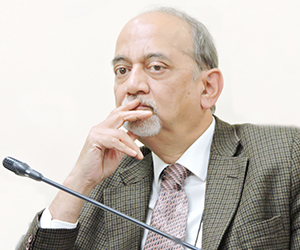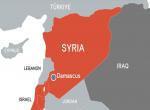The EU Summit on 21st March decided to extend the Brexit dead-line beyond 29th March. However, it set two dead-lines instead of one. A slightly longer dead-line of 22nd May is in case British Parliament approves the Brexit deal negotiated by Mrs May. The European Union (EU) was willing to be patient and allow UK more time to complete formalities if UK does not re-open package negotiated. If however UK could not decide, the EU was not prepared to allow the dead-lock in British Parliament to upset its own timelines. In such a case, the Brexit would take place on 12th April.
The immediate concern for EU leaders isto avoid upsetting European Parliament election in May. The uncertainty about Britain continuing with EU would make it difficult to configure the allocation of seats in the Parliament. If Britain takes part in the election, and then withdraws, the seats would have to be re-distributed. This is subject to decision-making not only at EU level, but also approval by all the member states in accordance with their respective national laws.
The time-line of 12th April to re-think the Brexit is too tight; in fact it designed to discourage re-thinking. British Parliament and the public opinion are too divided to reach a conclusion in a fortnight. Not only there is wide chasm between the positions of two national parties, there are divisions within each party. The EU leaders felt that longer extension would be a glide-path to rejection of the existing deal with which neither pro nor anti Brexit MPs are satisfied.
EU leaders could not be faulted for their caution after two successive rejections of the Brexit deal by the British Parliament. Extension may not yield a new verdict. Though the margin of defeat had narrowed down from230 votes on 15th January to 149 votes on 12th March, the gap remained too wide. EU had provided assurance that back-stop provision meant to prevent a hard border between Northern Ireland and UK would not mean that UK remains permanently tied to the EU. However, even with this improvement the Euro-sceptic Members of Parliament (MP) were not satisfied. The MPs in the ‘remain’ camp in any case are opposed to the deal.
The dead-lock in the British Parliament is partially due to the negotiating tactics chosen by Mrs. May. She projected that UK was prepared for a hard Brexit (without a deal) to gain better terms from EU. What was a bargaining tactic in external negotiations, cramped the Government’s position domestically, and made it harder for her to reach out to the Labour benches for accommodation. A less friendly view of her tactics is that she preferred to gain support of the hard-liners within her own party rather than build a national consensus.
The EU leaders were not keen to be too generous to UK. A soft line would have encouraged other doubters to head for the door. Their caution is justified given the voter dissatisfaction in a number of EU states with state of the EU. The dissatisfaction grew with economic slow-down, and difficulties in measuring up to tight fiscal discipline of the Eurozone. The resulting austerity first brought a reaction from Greek voters. The problem was replicated in Spain and Italy. UK is not part of Eurozone. UK’s dissatisfaction grew out of freedom of movement within EU, which brought an influx of East European workers to UK.
In the meantime, in an unprecedented move, the MPs have seized control of Parliament’s agenda from the Government. They were not satisfied with Prime Minister May’s assurance that Parliament would be allowed to chose its model in a series of ‘indicative votes’. They doubted that the Government would give them full range of choices. Mrs. May’s plan to bring the same deal to a vote third time was rejected by the Speaker. The revolt of the MPs was joined by Cabinet Ministers.
There is no consensus on existing deal. There is no time to attempt a major revision in UK’s stand. The Parliament is unable to reach a conclusion. In the vote on ‘Indicative resolution’ held yesterday, none of the eight options could win a majority. The proposal for a second referendum on any withdrawal bill got the most support, though it also fell short of majority (268 For, 295 Against). The proposal for a customs union came closest to securing a majority (264 For, 278 Against).
Parliamentary leaders are unable to reach an agreement on second Referendum, though Labour leader Corbyn briefly indicated support for this position.It may yet be revived, as the million strong public demonstration in support of UK remaining within EU showed. Even if this option is accepted, it is impossible to hold the Referendum before 12th April. All indications are that Britain is headed for a hard Brexit. Mrs. May in the meantime is determined to push through Brexit. She has offered to step down in case the Parliament adopts the Brexit deal she has negotiated in a third vote. The difficulties of decision-making in a democracy, and disenchantment with the model of regional integration EU represented, is not a good augury.
(A Senior Fellow at the VIF, the author has served in Brussels.)
Image Source: https://ichef.bbci.co.uk/news/660/cpsprodpb/2847/production/_90911301_c5b48218-424a-41c4-9b6b-638600ec508f.jpg










Post new comment